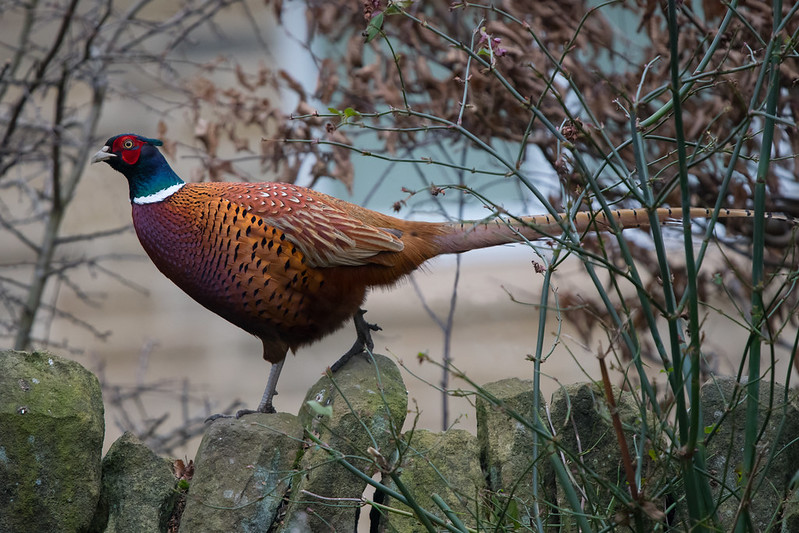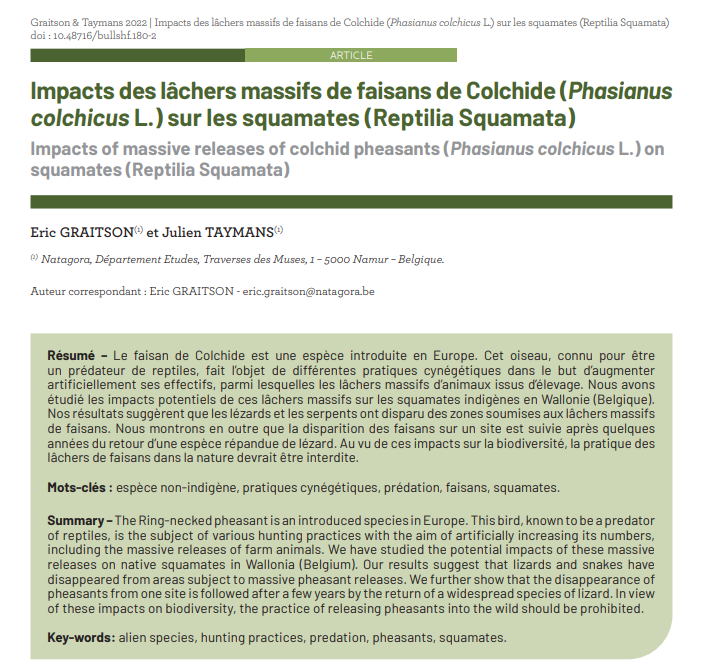

Pheasants eating reptiles, but not simply eating them, eating them in such large numbers that they disappear from areas of ‘massive’ releases. I’m assuming that the main mechanism is from devouring the snakes and lizards rather than the other possible mechanisms but, to be fair, this study cannot distinguish mechanisms. You could say, that since it is not an experimental study it cannot even ascribe general causality, and you’d have a point, but it would be difficult to persuade shooters to cooperate with a large-scale experimental study – good luck with that!
The paper suggests that 10-15 million Pheasants ‘are’ released in France each year but the data are rather out of date, and note that this paper seriously understimates the number of Pheasants released in the UK as being 35 million whereas the most recent estimate by a standardised (though not necessarily accurate) technique, and by the pro-shooting GWCT, is upwards of 50 million (see here). I don’t see any data for numbers released in Belgium in the paper.
Along a railway, if my rusty French is up to the job, the disappearance of Pheasants resulted in one species of lizard returning – so that is a little bit like an experiment. And the species in question is our very own Viviparous or Common Lizard, so that suggests the results might apply to the UK where our Common Lizard is not so common as to be commonly seen by me.
An interesting study, on a part of the largely unresearched subject of impacts of gamebird releases which was not treated remotely seriously by Defra when it introduced inadequate measures to curb releases of non-native gamebirds in England.
[registration_form]
The paper mentions some evidence that slow worms also returned to sites after pheasant releases stopped and highlights the marked contrast between the absence of the slow worm on sites affected by pheasant releases and its abundance everywhere else which makes it easy to detect when present.
Given the small number of pheasant release sites included in the study (for reasons that are explained) I guess the study may not be considered to be game set and match on this issue but it certainly provides troubling evidence that pheasant releases are indeed harmful to reptile populations that game managers cannot dismiss out of hand.
Incidentally the link to the paper did not work (for me at least) but the paper is easily locatable by googling its title.
Jonathan – thanks, your French remains better than mine. And I can’t make the link work now (I’m sure it did earlier) so I’ve removed it.
Another varant: In August 1547 around here there were others to be shot with “crossbowe & handgonne… any redde or falow dere, crane, heron, shoulerd, bustard, mallard, teele, curlewe, fesaunt…woodcock & conyes or any other kynde of game fowle or thinge, att all tymes…”
Now no redde, falow, crane, shoulerd, bustard, teele, curlewe – but then I don’t know what kynde of thinge a shoulerd is or whether it belongetheth to the kynge or notte att all tymes